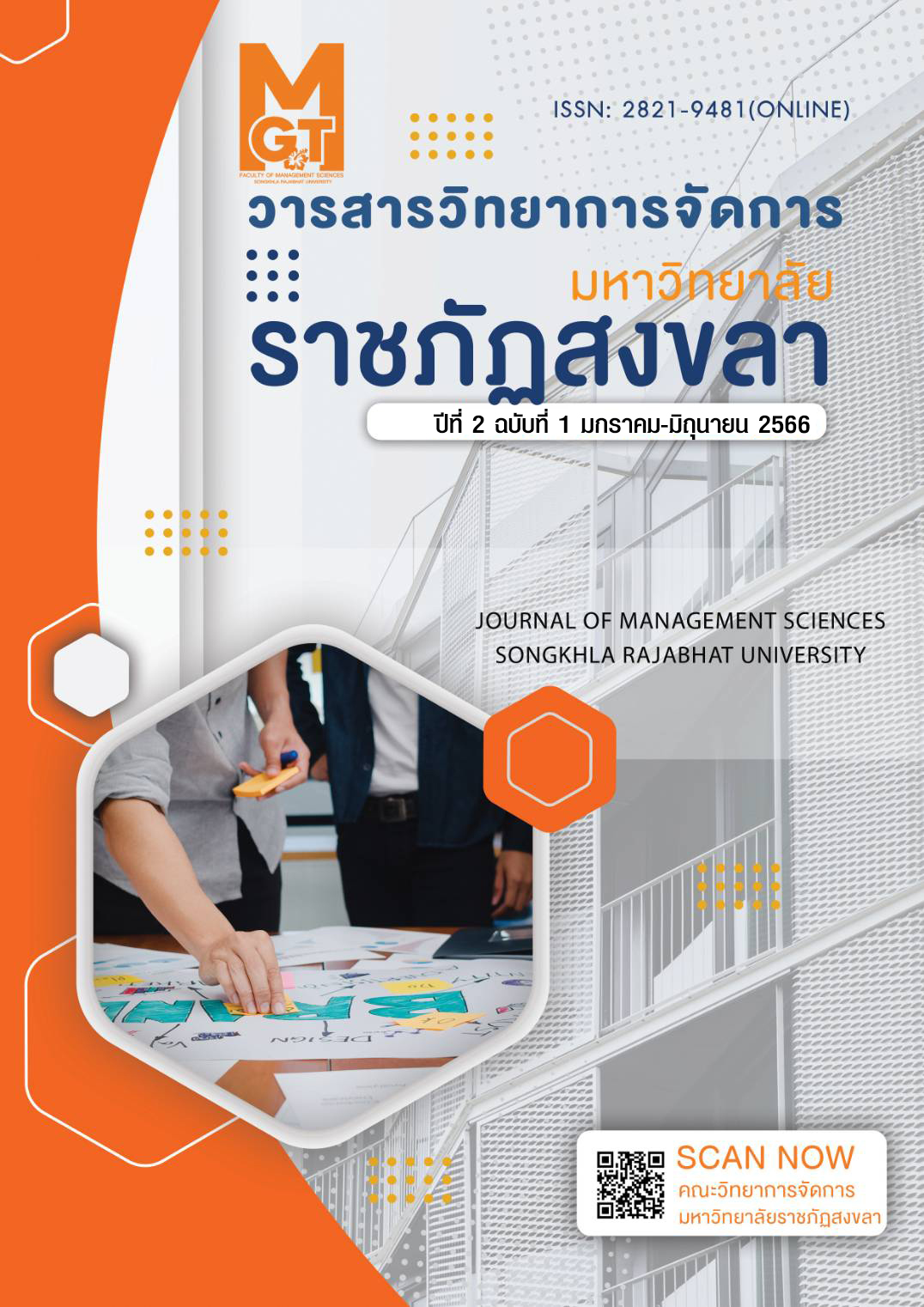Income structure of people in suburbs case study: Ketri Subdistrict, Mueang District, Satun Province
Main Article Content
Abstract
The objectives of this research were (1) to study the income structure of household members in Ketri sub-district, Muang district, Satun province, and (2) to analyze the consistency between the income structure and the development plan of Ketri Subdistrict Administrative Organization. The secondary data used in this study were from “One Tambon One University Campaign” organized by Songkhla Rajabhat University in A.D. 2021-2022. 347 households were recruited as samples with 1,443 people divided into 578 people with income and 865 people without income. The descriptive statistics were used to analyze data: frequency, percentage, mean and standard deviation. To test the hypothesis by comparing an income difference by using The one-way analysis of variance (ANOVA) and F-test.
The results revealed that (1) household members had an average income of 93,514.87 baht per person per year. The highest income received was averagely 143,257.22 baht per person per year for those having salary, business owners, agricultural business, and others respectively. There was a significant difference of income sources at .01 significant level, and (2) the development guidelines of Ketri Subdistrict Administrative Organization are consistent with related agencies and also with its vision, goals and strategies, whereas the preparation of plans, projects, activities and budgets are not consistent with the population proportion and income structure of the population.
Article Details
References
Budiman Achmad and Dian Diniyati. (2018). The income structure of smallholder forest farmers in rural Sumbawa, Indonesia. Biodiversitas, 19(3), 936-946.
Johnson, A., and Smith, B. (2019). Rural Income Dynamics: A Case Study in Agricultural Activities. Journal of Rural Economics, 25(2), 45-62.
Lee, H., and Chen, L. (2018). Wage Labor and Rural Income: Evidence from a Rural-Urban Fringe Area. Journal of Rural Sociology, 32(1), 112-130.
Yuko, S. and Rambo A.T. (2017). Household Structure and Sources of Income in a Rice-Growing Village in Northeast Thailand. Southeast Asian Studies, 6(2), 275–292.
Singh, R., Sharma, S., and Gupta, M. (2020). Non-Farm Activities and Rural Income: A Case Study in Rural India. Journal of Rural Development, 40(3), 78-95.
World Bank. (2022). Thailand Rural Income Diagnostic: Challenges and opportunities for Rural farmers. Retrieved June 1, 2023, from www.worldbank.org: https://documents1.worldbank.org/curated/en/099005010202299399/pdf/P1775991e5f180ee130cf14572184e61f60735628d80.pdf
ดาวนภา เกตุทอง. (2563). การกระจายอำนาจสู่องค์กรปกครองท้องถิ่น. วารสาร มจร. เพชรบุรีปริทรรศน์, 46-57.
สำนักงานสถิติแห่งชาติ. (2565). รายงานการศึกษาแนวทางการพัฒนาคำนิยามเมืองและชนบทของประเทศไทย. กรุงเทพมหานคร: สำนักงานสถิติแห่งชาติ.
สุรเดช ตระกูลคูศรี. (2566, กุมภาพันธ์ 23). การวิเคราะห์การกระจายรายได้และภาวะความยากจนของครัวเรือนเกษตร. Retrieved from คลังความรู้ดิจิทัท มก.: https://kukr.lib.ku.ac.th/kukr_es/BKN_GRAD/search_detail/result/216739
องค์การบริหารส่วนตำบลเกตรี. (2565ก). แผนการดำเนินงาน ประจำปีงบประมาณ 2565. Retrieved from http://www.kettree.go.th/attachments
________. (2565ข). แผนพัฒนาท้องถิ่น (พ.ศ. 2561-2565) (ฉบับทบทวน). สตูล: ผู้จัดทำ.


